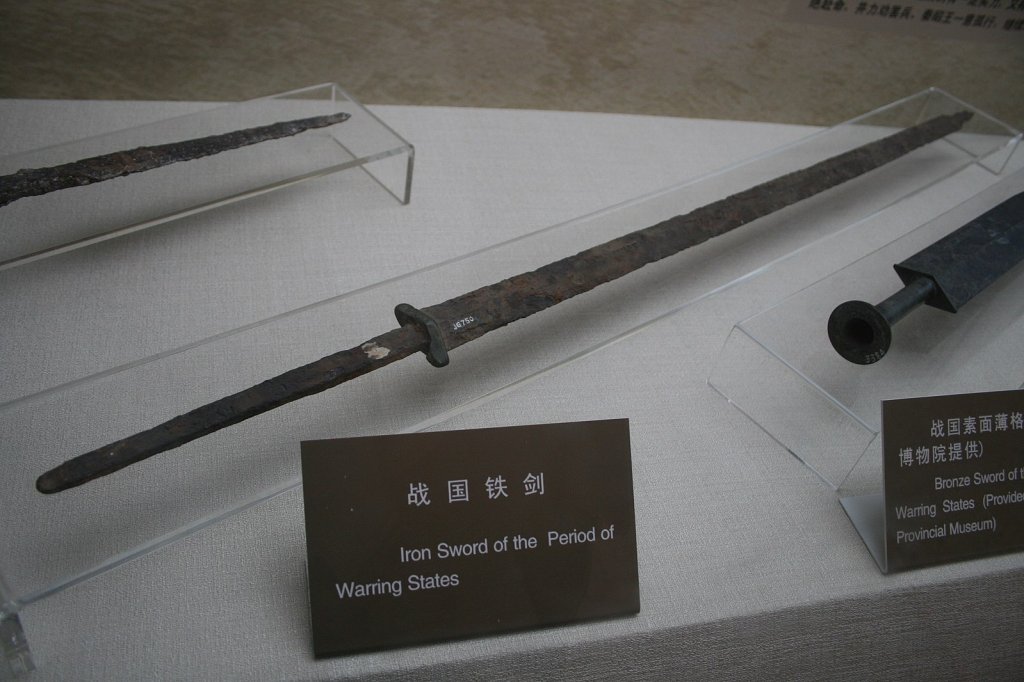Today, we grow up reading stories about the massive battles of World War I and World War II, which included large-scale military operations that lasted months, involved millions of men and material and often resulted in equally large-scale casualty counts. Thankfully, the science of war has evolved beyond massive death tolls, but it took some doing to get there.
In the days before industrialized warfare, armies met on a single battlefield for combat, but at most, these battles lasted a few days and were often decisive. Probably the largest classical formation battle involved more than a million people and almost half of them were slaughtered. Considering it happened over the course of two years from 262 to 260 BC, the scale of the battle is even more staggering.
It would become an early version of the kind of slaughterhouse warfare that would define the first half of the 20th Century.
The Battle of Changping happened in China during the Warring States period, around 200 years of Chinese warlords jockeying and fighting for supremacy over all of ancient China. Two of the ancient states, Zhao and Qin, reached a state of equal power around 260 BC, so of course, they had to decide which was actually more powerful – one of them had to go.
In 265, Qin attacked the state of Han and advanced so fast, it created a Han-allied pocket in the city of Shangdang. The commander of the city, knowing the Han would never be able to retake the area, offered the city to the Zhou. Shangdang would be a strategic launching point for a Qin invasion of Zhou, so the Zhou king agreed and sent his forces to capture it.
In April 262 BC, a Qin army led by Gen. Wang He invaded the Shangdang territory with 550,000 troops. The Zhao army, led by Gen. Lian Po, responded immediately with 450,000. The vanguard of the two massive forces met in the hills and passes around the Dan River and immediately began skirmishing. The Zhao set up up defensive positions hoping to exhaust the Qin army, as the Qin were much further from their supply lines. They set up a series of defensive walls across the river to keep the Qin from breaking through to the main force.

The result was a stalemate that lasted two years, with repeated attempts to breach the defenses across the river. The furthest the Qin advanced in that entire time was only the second line of Zhao defenses. Meanwhile, more and more reinforcements came to the area. The Zhao strategy was working. Desperate to break the stalemate, Qin sent spies into the Zhao state to spread rumors that Zhao general Lian Po was either too old and senile to win or too cowardly to fight.
The Qin weren’t the only ones tired of the protracted war. The King of Zhao was beginning to feel the burden of the costly enterprise. When he heard the rumors, he was ready to agree and replaced Lian Po with the untested son of a former Zhao general. Zhao Kuo was exceptional at military theory and doctrine, but had never actually commanded an army. When the Qin learned the King of Zhao had taken the bait, they secretly replaced their own general with Bai Qi, but for an entirely different reason: Bai Qi’s specialty was annihilation.
When the inexperienced Zhao Kuo took command of the Zhao, he immediately made rookie mistakes. He abandoned the tried-and-true defensive positions to go on the offensive. In doing so, he overextended his supply lines and left his camp relatively unguarded. Zhao Kuo made an all-out blitz on the Qin’s left flank, which Zhao believed was weak.
It looked weak because Bai Qi saw the move coming a mile away. Bai intentionally reduced his left flank to draw the young general into an attack. When the Zhao did attack, they soon found themselves cut off from their supply line and communications entirely, the Zhao army was split in two, and was at the bottom of a mountain range, where the Qin had the high ground. It was encircled, ambushed and annihilated.
The Qin took heavy losses, too, around 250,000 men. It would eventually recover, however, and within 40 years, reconquered all of China.

